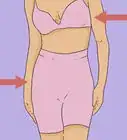This article was co-authored by Landis Owens and by wikiHow staff writer, Eric McClure. Landis Owens is a Personal Trainer and the Owner of Almighty Personal Training Studio in Tempe, Arizona. With over 15 years of experience in the health and fitness industry, Landis specializes in weight loss, nutrition, and core and strength training. Landis received a football scholarship to Mesa Community College where he studied Engineering and Sports and Exercise. He is an ISSA Certified Personal Trainer and also holds certifications in Nutrition, Youth Sports, Injury Stay Free, and CPR. Landis also competes in bodybuilding competitions.
There are 16 references cited in this article, which can be found at the bottom of the page.
This article has been viewed 37,323 times.
An ab bench is a workout bench that can be raised or lowered to perform a variety of different exercises, most of which will strengthen your core. It's a great way to customize your ab workout and make those boring old crunches and leg raises a little more interesting. An ab bench is also a great tool for beginners at the gym since it makes it easier to focus on your form by providing support for your back and legs. While there are a bunch of different exercises you can do on an ab bench, the most popular options are the decline sit-up and the incline leg raise. Check out our tips below for using an ab bench, plus awesome workout options that use this versatile machine.
Steps
Doing Decline Sit-Ups
-
1Sit on the end of the bench near the footrest and thigh pads. Pop yourself up on the end of the bench closest to the footrest and thigh pads. Since the bench is resting on an angle, this can kind of be awkward. Lift one leg over the thigh pads with your feet on the ground on either side of the footrest. Then, lower your butt on to the edge of the bench with your thighs on the thigh pads.[1]
- If it’s easier, you can sit with your back to perpendicular to the bench and swing one leg over the thigh pads with your butt on the bench before scooting forward.
Tip: Decline sit-ups are basically a variation on a regular sit-up. They include the lower abdomen muscles which are usually left out of regular sit-ups and crunches.
-
2Scoot back a little until your feet press against the footrest. With your legs on top of the thigh rest, swing your feet under the footrest. Slide back towards the empty end of the bench until the tops of your shoes meet the bottom of footrest. Your knees will be resting over the thigh pads at this point.[2]
- The term “thigh pads” is a little misleading. They usually rest under the knees when you’re performing decline sit-ups.
Advertisement -
3Lay down with your back flat against the center of the bench. Use the footrest and the thigh pads to stabilize your weight as you lean back. If there are handles sticking out the side of the bench under the platform for your back, you can hold these handles to stay balanced on the bench. Continue leaning back until your spine is resting straight against the bench.[3]
- Lie on the bench as though you're lying in bed, especially if you have a 30 to 40 in (76 to 102 cm) round waist.[4]
Tip: Only do this when you’re ready to start performing the exercise. Since your head is hanging lower than the rest of your body, you may get lightheaded if you just stay in this position for too long.
-
4Exhale as you raise your upper body up over your hips. Fold your arms over your chest or keep them straight at your side. Take a deep breath, hold it, and begin slowly exhaling as you raise your upper body up with your core contracted. Use the leverage from the footrest and thigh pads to keep your lower body still and pull yourself up with your abs. Stop once your chest is raised directly over your hips.[5]
- Keep your back as straight as possible. Ideally, the angle of your spine will not change as you raise yourself off of the bench.
- You should feel your entire core flexing as you raise yourself up.
-
5Pause for 1 second before lowering yourself back to the bench. Once your chest is sitting over your hips, pause for a brief moment. Begin inhaling as you slowly lower your back to the bench. Stop once your spine is hovering 2–5 inches (5.1–12.7 cm) above the surface of the bench. Finish inhaling air and prepare for the next repetition.[6]
- It’s more efficient to not go all the way back to your original position. If you avoid resting your spine directly on the bench when you lower yourself, your core will remain activated in between the individual sit-ups.
-
6Repeat this process to perform more reps. Continue raising and lowering your upper body without resting directly against the back of the bench. Keep your spine straight and use the footrest to get enough leverage to raise yourself up. The amount of reps you do depends on the percentage of your workout you want to dedicate to your abs. If you’re just starting out, doing 2 sets of 10 reps each is a great way to work on your core.[7]
- Raise the bench up higher to increase the amount of resistance you experience with each sit-up.
- Once you become proficient with decline sit-ups, try doing them while holding a weight or medicine ball. This is a great way to do some weight training for your core.
Performing Incline Leg Raises
-
1Sit on the bench with your head near the thigh pads. Plant your feet firmly on the floor on the opposite end of the footrest, facing away from the bench. Sit on the bench and slowly lower your upper body until it is flat against the backrest. Reach above you and grab the handle that sticks out in between the thigh pads. If there isn’t a handle for you to grab, wrap your hands around the back of the thigh pads to brace yourself.[8]
- The higher the footrest and thigh pads are, the more difficult this exercise will be.
Tip: Incline leg raises are a great way to strengthen the lower core, which is often fairly difficult to exercise. Doing this exercise on an ab bench gives you a larger range of motion, which makes it easier to perform leg raises properly.
-
2Bend your knees slightly and activate your core. Spread your legs out a little past the base of the bench and bend your knees. Grip the handle or thigh pads firmly and tighten your abdomen to activate the muscles and stabilize your upper body.[9]
-
3Raise your legs up in the air until your hips raise off the bench. Lift your feet off of the floor. Brace the weight of your lower body with your back against the bench. Slowly raise your legs up in the air without moving your upper body or back. Continue lifting your legs until you feel your hips slightly lifting off of the bench. Keep your feet paired next to one another while doing this.[10]
- For most people, the hips will naturally lift off of the bench when their legs are a 90-degree angle with the bench.
- Exhale while you raise your legs in the air.
-
4Hold this position for 1 second before lowering your legs. Keep your legs as still as possible. Pause with your hips off of the bench before lowering your legs together. Lower them to the original position, keeping your feet off of the floor. Inhale as you lower your legs and prepare for the next repetition.[11]
-
5Continue doing leg raises to perform more repetitions. Repeat this process by lifting both feet in the air and holding them above the bench. Lower your feet slowly and keep your feet off of the floor. If you’re just starting out with a new workout routine, do 2 sets of 10 repetitions.[12]
- Once you get good at these, increase the angle of the bench so that you’re more upright. If the bench is past 25-35 degrees, you will begin feeling this workout in your upper thighs as well.
Modifying Other Exercises with the Ab Bench
-
1Twist to the right or left while holding yourself up to do Russian twists. Sit in the ab bench the same way that you sit in it for decline sit-ups, with your head lower than the rest of your body. Slide your feet under the footrest with your knees on top of the thigh pads. Raise your torso up while maintaining a straight back. With your upper body under your hips, hold your arms in front of you and twist your entire torso to the right. Pause for 1 second before twisting your torso all the way to the left to complete a single rep.[13]
- The Russian twist is a great way to stretch and workout the abdominal muscles on your sides.
- You can do this with a medicine ball or dumbbell for an added layer of difficulty and resistance.
-
2Perform back extensions to strengthen the lower back. Lay face down on the bench and slide your feet underneath the thigh pads. Scooch your way back a little until your calf muscles are resting firmly under the thigh pads. Tighten your abdominal muscles and put your hands behind your head. Gently raise your upper body 6–12 inches (15–30 cm) off of the bench. Keep your back straight and gently lower yourself to finish one repetition.[14]
- This is a great way to work on your lower back and hip muscles.
- Keep your knees on the bench while doing this.
Warning: Do not do this is you have experienced a back injury at any point. Back extensions can be pretty hard on the body if your back isn’t in great shape.[15]
-
3Use the ab bench to perform incline or decline dumbbell presses. Instead of using a flat bench to lift free weights, you can use an ab bench to do them at an angle. Performing dumbbell presses on a decline will work on your lower chest muscles, while doing them on an incline will put more pressure on your upper chest muscles. This is a great way to ensure that you’re working on every part of your upper body[16]
- For decline dumbbell presses, sit on the bench the same way you would for a decline sit up with your head lower than the rest of your body.
- For incline dumbbell presses, face away from the bench and lean against it with your head near the footrest.
- When lifting the weights, be sure to keep them perpendicular to the ground. Lift them straight up the same way that you normally do on a flat bench.
- The decline press is especially hard if you aren’t experienced with free weights. Do not jump right into this exercise without building up to it first.
Adjusting the Bench
-
1Raise the bench to increase the amount of resistance in your workout. To raise the bench, pull out the adjustable knob and lift the bench so that the footrest is higher in the air. You can sit on the bench with your feet on either end of the bench depending on what exercise you’re doing. Raising the bench will increase the difficulty of your workout regardless of the direction you’re sitting.
- The thigh pads are the 2 foam cylinders that sit above the bench, closest to the backrest. Your knees go on top of them if you’re doing decline exercises.
- The footrest refers to the foam pads at the end of the bench, under the thigh pads. Your feet go underneath the footrest pads if you’re doing workouts on a decline.
- Some ab bench footrests and thigh pads can be adjusted with knobs on the beams that connect them to the bench. On many ab benches, these parts are not adjustable, though.
-
2Lower the bench to decrease the difficulty of exercises. Pull the knob out of the beam and move the footrest down so that it’s closer to the same height as the bench to lower the angle. When you lower the bench, you decrease the amount of resistance you experience regardless of how you’re sitting on the equipment.
- You can set the bench to be parallel with the ground if you want, but the entire point of an ab bench is that it’s designed to be elevated in either direction. There’s usually no point to doing exercises on the bench without setting the bench on an angle.
-
3Keep the bench on a 10- to 15-degree angle if you’re just starting out. If you aren’t used to doing exercises on an ab bench, stick with a fairly easy angle to start off. For incline exercises, you need to balance your weight on a slope and support yourself from above. For decline exercises, you lay down with your head lower than the rest of your body. These can be difficult positions to maintain if you’re new to the ab bench, so start off slow before moving to extreme angles.[17]
- Getting out of the ab bench when your head is below your body takes some coordination as well, so it’s especially important to start out slow if you’re doing decline sit-ups.
References
- ↑ https://youtu.be/NPttpwI1vdU?t=10
- ↑ https://youtu.be/HZbdAxLR68M?t=42
- ↑ https://youtu.be/HZbdAxLR68M?t=71
- ↑ Landis Owens. Personal Trainer. Expert Interview. 13 July 2021.
- ↑ https://youtu.be/HZbdAxLR68M?t=69
- ↑ https://youtu.be/HZbdAxLR68M?t=74
- ↑ https://youtu.be/n5m8p264Zvo?t=51
- ↑ https://youtu.be/n5m8p264Zvo?t=70
- ↑ https://youtu.be/n5m8p264Zvo?t=72
- ↑ https://youtu.be/n5m8p264Zvo?t=78
- ↑ https://youtu.be/n5m8p264Zvo?t=87
- ↑ https://youtu.be/n5m8p264Zvo?t=51
- ↑ https://youtu.be/b_OuaIWtqXU?t=49
- ↑ https://youtu.be/1ep04SgIbO0?t=80
- ↑ https://www.ncbi.nlm.nih.gov/pmc/articles/PMC3944566/
- ↑ https://youtu.be/0xRvl4Qv3ZY?t=7
- ↑ https://youtu.be/tpLfsh2QB28?t=11
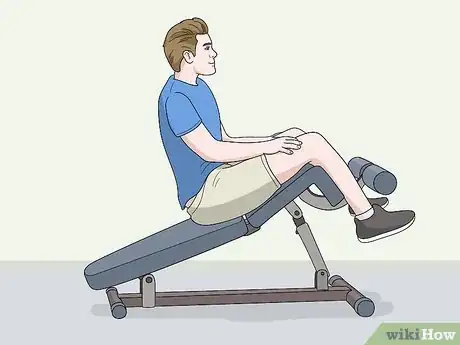








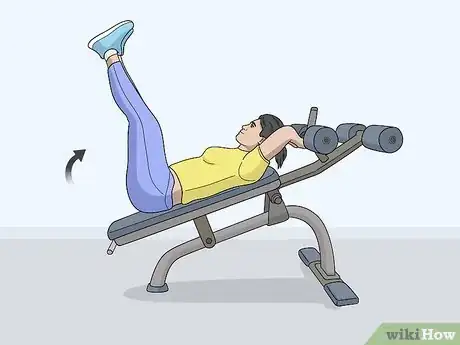
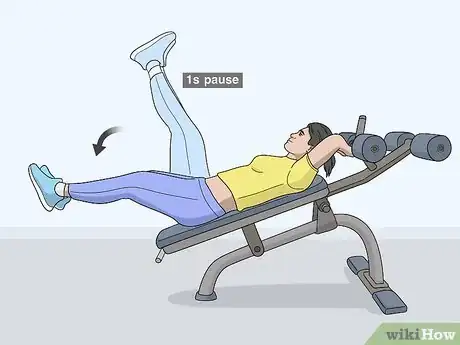

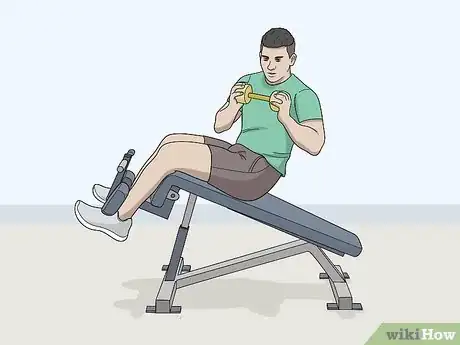



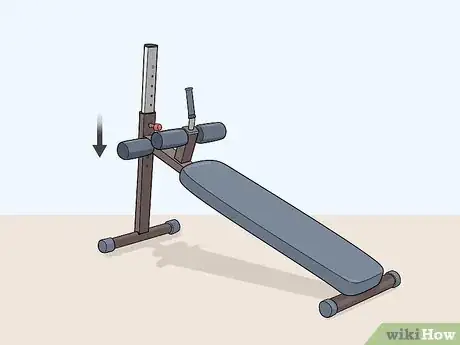
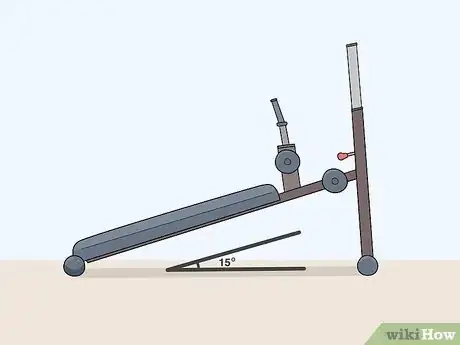


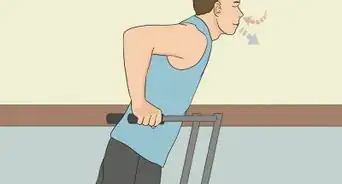

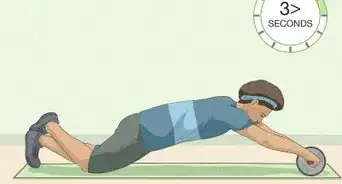

-Step-9-Version-12.webp)
-Step-16.webp)









